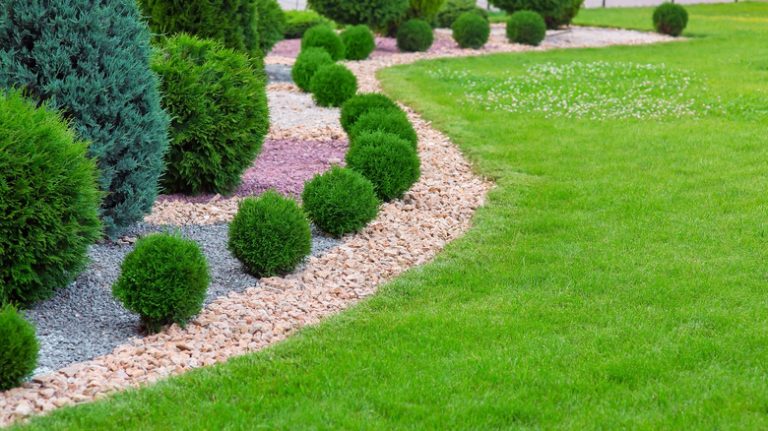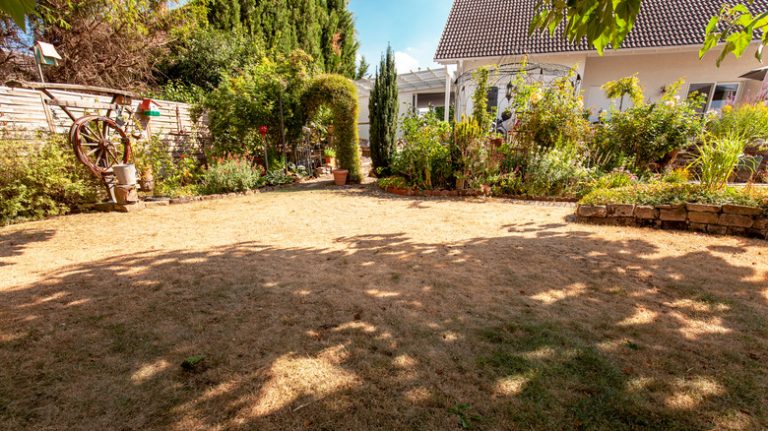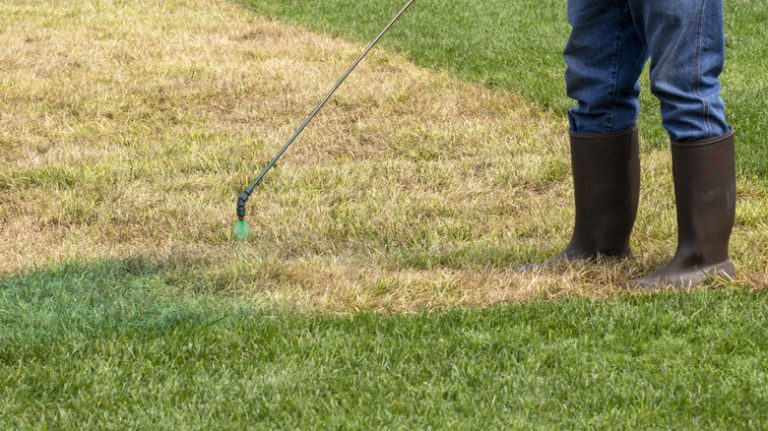While long, luscious, green grass is the natural goal of any lawn owner, having a yellow lawn isn’t always a bad thing. In fact, a yellowing or golden lawn can prove a temporary and necessary evil during the year. The ability for grass to turn yellow for a short time (by going dormant) is actually one of its self-protective qualities.
In lawn care, normally green grass equals vitality and good health, while the color yellow typically is cause for concern. Homeowners work hard to keep their grass green, providing sufficient watering and consistent exposure to sunlight. They also mow their lawns regularly and mow the grass to the right length, making sure not to cut off more than one-third of the blades at a time so as to not stress the grass.
Grass turning yellow is indeed a sign of stress, and too much sun can also be a stressor for lawns. In response, a lawn may turn yellow, but rather than the grass dying, it may be changing colors to protect itself, going dormant to wait out the extreme temperatures. If so, you can let your gold lawn be until it’s ready to turn back to green.
Reasons grass turns yellow (or gold)
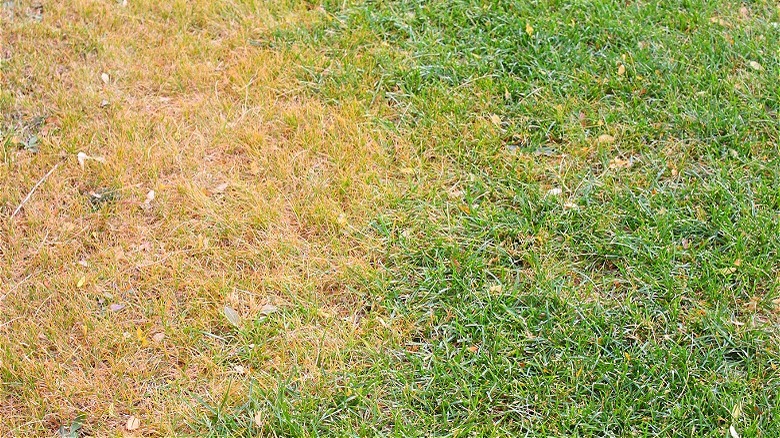
As said, though a yellow or gold lawn can seem disturbing at first, the grass may just be dormant. Dormancy is one way that grass restores itself during very high (or cold) temperatures. Speaking with Martha Stewart, Teri Valenzuela, a natural science manager, explained the process, “This natural response is your lawn’s way of conserving its resources for continued high heat and infrequent precipitation ahead. It’s a bit of a temporary dormancy and beneficial for your grass’s survival.”
During times of extreme heat, your initial response might be to saturate your dry grass to save it. However, Valenzuela says you should do the opposite, only offering your lawn some water: “Help your grass (and save water) by allowing it to go gold and just lightly watering your lawn about 0.5 inches once or twice a week.”
When conserving, the grass should appear a bit gold or yellow but not look to be in a state of dying. Though the top of the grass may appear yellow, the crown, the center of the plant where the roots meet the shoots, should still be vital and healthy. When you inspect the roots, you should see green.
How to know if your grass is in trouble
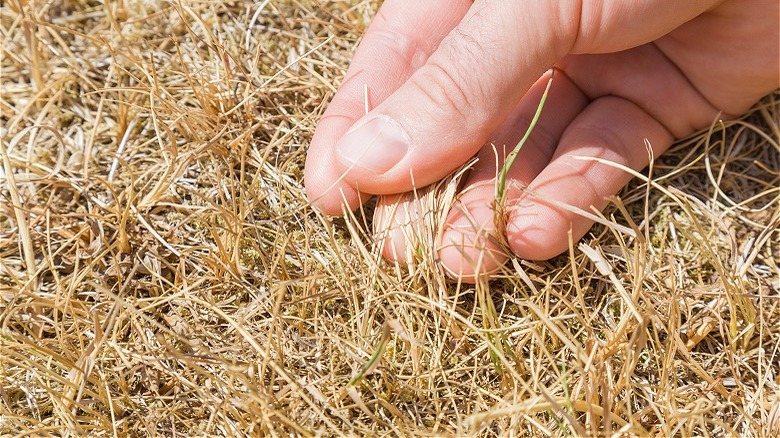
Sometimes, though, grass isn’t conserving energy during a heatwave; it’s actually dying. Dead grass can appear brown and dried out (versus yellow-gold, as described above). In this state, it’s typically devoid of any nutrients, will break when touched, and feels very rough.
Though there are some visible signs, another way to find out if grass may be dying is to do a soil test. A soil test can measure nitrogen levels and also determine if there are any fungi or diseases present that can negatively affect grass growth. It can be especially helpful when you encounter periods of yellow grass and want to determine if it is stemming from hot weather or a problem with the soil.
Further, the type of grass you choose affects how it will grow around your home since some grasses can endure very hot weather while other types do best in cooler climates. Warm season grasses like Bermuda and zoysia, for example, can withstand heatwaves. Cool-season grasses, meanwhile, like Kentucky bluegrass and perennial ryegrass do well where there are cool winters and summers that aren’t too hot. For areas that have both very cold winters and very hot summers, you’ll need to get grass that can withstand both extremes, such as tall fescue.

